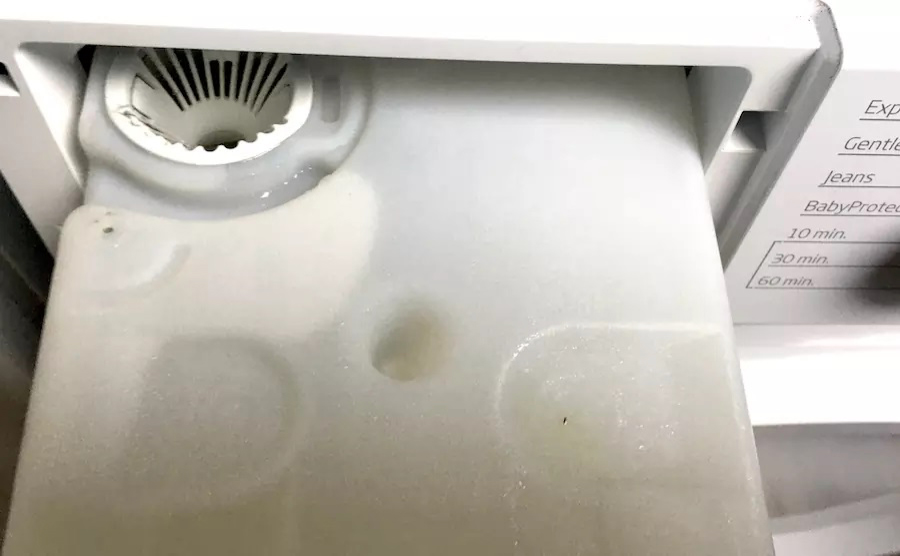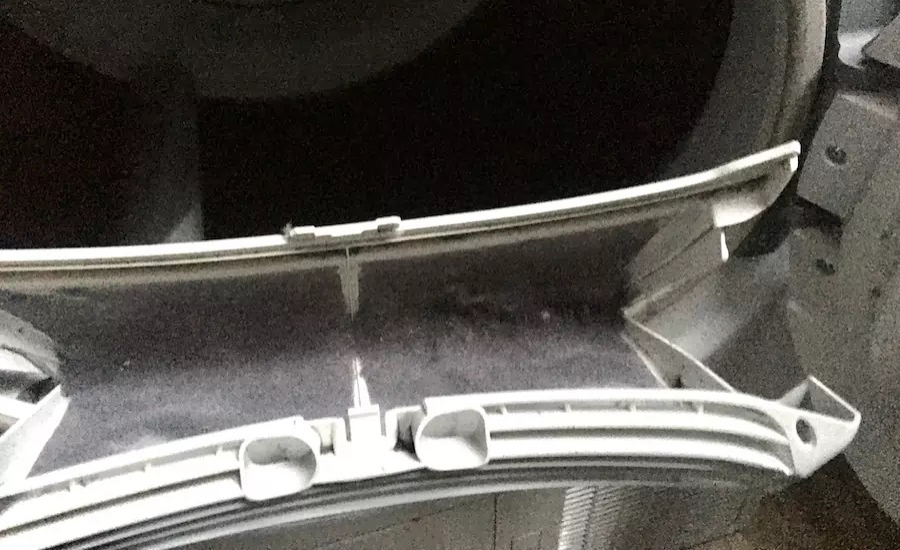Written On
Mon 22nd November 2021
Written By
Homeforce
Category
Guides
Share This
Maybe it’s been working reliably for years and only just started to exhibit problems, or you’ve just installed your shiny new condenser tumble dryer at home and are having trouble getting it up and running.
Either way, in this article we’re going to look at the most common problems you’ll experience with your condenser dryer and how to fix them.
In lieu of that, read on the find out what might be the matter with your machine.
If your clothes are coming out still damp, it may be a simple case of cleaning the filter or condenser plate or emptying the water tank. If it’s a serious mechanical issue, consult the user manual troubleshooting guide. Failing that, it’s advisable to ask a professional to take a look at it.
But with a little knowledge, you may be able to diagnose what the issue is. Let’s start with a quick recap on how condenser dryers work.
How condenser dryers work
Let’s briefly look at how these machines work in general before diving into specific issues and fixes. And these fixes should apply to most condenser dryer makes, including
- Candy condenser dryer problems
- Hotpoint condenser dryer problems
- Hoover condenser dryer problems
- Beko condenser dryer problems
- Miele condenser dryer problems
The example images we use below are from a Beko condenser dryer, but most models work in a similar way with similar components.
It’s important to know the difference between conventional and condenser tumble dryers:
Conventional tumble dryers work by flowing warm air through the drum of the machine, evaporating moisture from your clothes (and bedding, towels, etc.) and directing the resulting moist air out of the machine and typically through a ventilation system that takes it outside of the building.
Condenser tumble dryers dry your clothes the same way (by evaporating the moisture into warm air) but instead of then directing that moist air straight outside, they actually direct it to a condenser plate built into the dryer where the water condenses (i.e. cools and turns from water vapour into water) and is pumped into a collection tray or sometimes straight out of the machine.
One major advantage of condenser dryers is that they can be easier to install …since you don’t need that direct airflow going outside the building.
Air flows from the back of the machine through the clothes and toward the front where particles of dust and debris are collected on a filter (usually located by the door), which should be cleaned off regularly.
Get your manual ready
When in doubt, consult the instruction manual that came with your appliance. Throughout this article, we may ask you to check your model’s manual for specific details that can vary from one model to the next.
If you’ve lost the manual, don’t worry! As with most appliances these days, you can easily get a copy from the manufacturer’s website at no cost by searching for your tumble dryer’s model number and downloading the PDF. If you don’t know what your dryer’s model number is, try looking for it on the sides of the unit.
Your manual will most likely have a “Troubleshooting” section which will cover much of the same points as you’ll see in this article and more, though in rather a terse language.
Of course, if you’d rather the issue was taken out of your hands, then the very best solution is to have your home appliances covered by our Homeforce Appliance Plan.
When your appliances are covered by a plan, our qualified engineers will be on hand to solve any problems that may arise with your tumble dryer and other home appliances. Get in touch today and talk with our friendly customer care team who understand that your home is more important than ever.
Don’t overload the drum
You probably knew this already, but make sure you’re not putting too much clothing in the drum for each drying cycle. If there’s too much in there, it won’t be dried effectively and your clothes will come out still damp. Or, the machine might take longer than expected to complete the selected programme.
The precise quantities vary between manufacturers and models, so consult your manual to find out exactly how much you should be loading into your machine at once.
The suitable weight of a load will vary based on the type of material your clothing, bedding, towels, etc. are made from as well.
And remember that some garments, such as delicate fabrics, woollen and silk garments, are not suitable for tumble drying whatsoever – look for a “Do not dry with dryer” symbol on the labels.
It’s a good idea to separate clothes that have become tangled in the washing machine before loading them into the dryer. Also, garments with metal bits like zippers, buckles and buttons should be fastened and turned inside out before tumble drying.
Clean the filter regularly
For good results, make sure to clean all the dust and debris off the fluff filters after each load has finished drying. If this task is neglected too often, the dryer will become significantly less effective and your clothes will come out still damp or the dryer will take a really long time to complete the dry cycle.
To clean the filter, simply remove it from the machine and wipe it down with a cloth or lint brush. Run it under a tap to rinse away any more dust particles and then dry it thoroughly with a tea towel.
It’s also a good idea to wipe away all the dust that’s accumulated in the cavity where the filters slot in.
Ideally, you’d use a good lint brush tool that you can stick down there and swipe around, but if you don’t have such a tool you can just use a regular cleaning cloth.
Open a window to keep the room cool
Condenser dryers work more efficiently in cooler environments, so if possible try to keep the room it’s in nice and cool.
This might mean turning off any radiators in that room, keeping a window open, or turning on the AC from time to time.
Empty the water tank
If your clothes are not being dried properly, or the machine is taking a long time to do so, one thing that could be at fault is the water tank.
This is often an area that many people forget about.
If it’s full, there will likely be a warning symbol LED on the control panel indicating that you need to empty the water tank. This is simply a cut off safety feature

Consult your manual for specifics on how to empty the water tank. You’ll find the water tank usually as a slide in unit in the machine. Simply slide it out and you will see that the water is probably full.
Take it carefully to a sink or drain and dispose of it. Then slide it back into the dryer unit. The warning light should now disappear and the unit should start..

Wear and tear of the drum assembly
Neglecting to clean the filter regularly can create extra wear and tear on the components, leading to a shorter lifetime of the machine.
If you start to notice the tumble dryer becoming noisy during operation, that’s a sign of internal moving parts becoming worn, most likely due to accumulated dust and/or overloading.
In this case, you should call a specialist to come and get it sorted sooner rather than later, otherwise, parts can soon wear down to the point where you’ll need to get the entire drum assembly replaced, which will be quite expensive.
Whereas if you get it serviced sooner, it might be as simple as replacing a small part that costs only a few pounds!
As is often the case with home appliances, it’s best to catch faults early on before they create serious issues later on.
Cleaning the condensing unit
The condensing unit or ventilation grid is where cold air is passed by the hot moist air that comes from the drum …in order to condense it into liquid water ready to be drained out.
Over time this part can gather a great deal of dust and negatively affect the performance of the dryer.
In order to take a look at the condensing use, you’ll probably need to open some clips near the bottom and pull it out – check your manual for details on how to take it out. Look for information on the condensing unit, heat exchange or ventilation grid.
If this component is caked in a solid layer of dust then there is no way for the air to move through and that would explain why your clothes take an hour or more to finish drying.
The solution is to simply remove the part and clean it thoroughly. Since it’s not an electrical part, it’s safe to rinse it with water or even hose it down outside if it’s looking full of grime.
Once you’ve cleaned all the dust and debris off, secure it back into the machine and you should find your dryer working much more efficiently like it used to. We recommend you do this after each load you’ve taken through your dryer.

Prolonging the life of your condenser dryer
So there you have it – some of the most common problems you might have with your condenser dryer and how to fix them. One final tip …
In addition to regular cleaning of the filter and condenser plate, you can dramatically extend the life of your condenser tumble dryer by occasionally vacuuming out some of the dust and debris that’s accumulated in the machine over a few months or years of usage.
If you’d rather leave the trouble of maintaining your dryer to someone else, consider getting your home appliances covered by our Homeforce appliance Plan. Our qualified engineers will be on hand to solve any problems that may arise with your tumble dryer and other appliances.
We have over 10 years of experience protecting UK homes against unexpected faults, breakdowns and other costly repairs. Get in touch today and talk to our friendly customer care team who understand that your home is more important than ever.